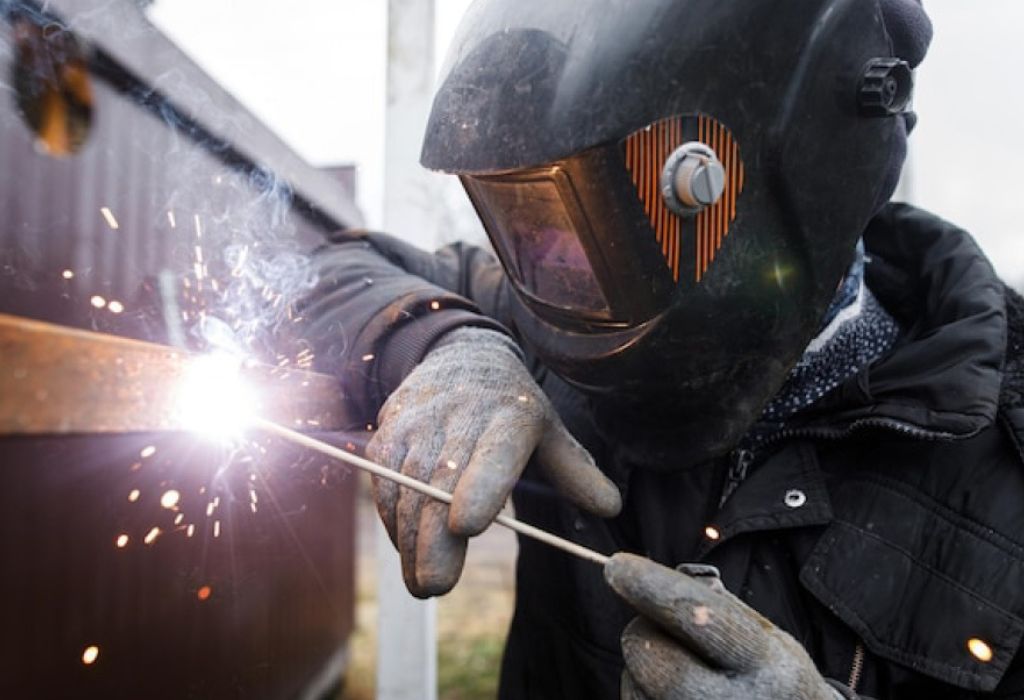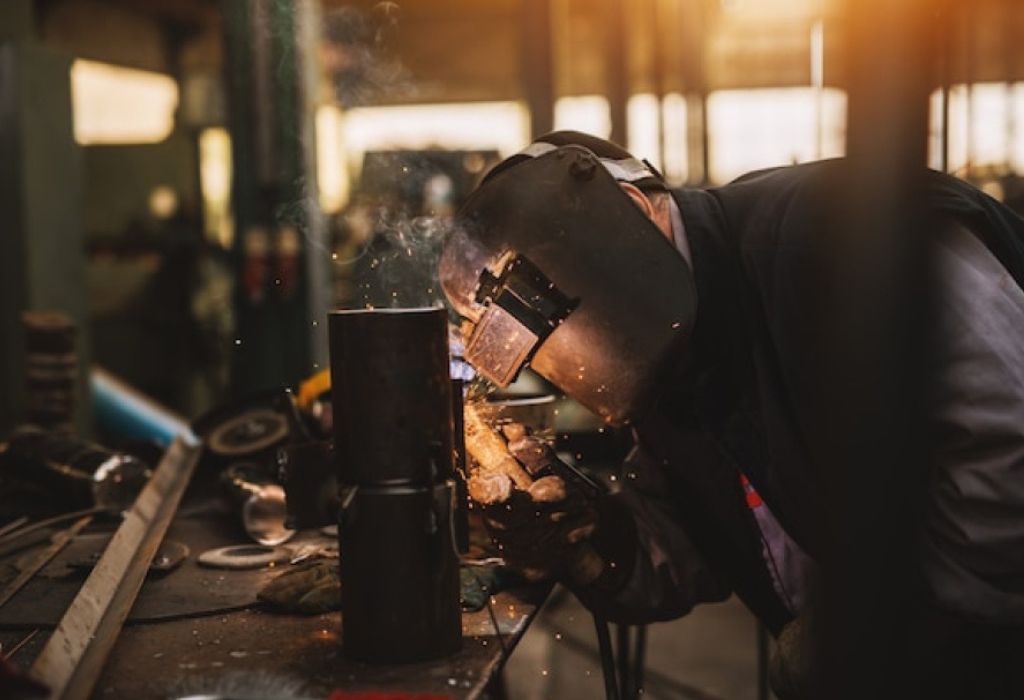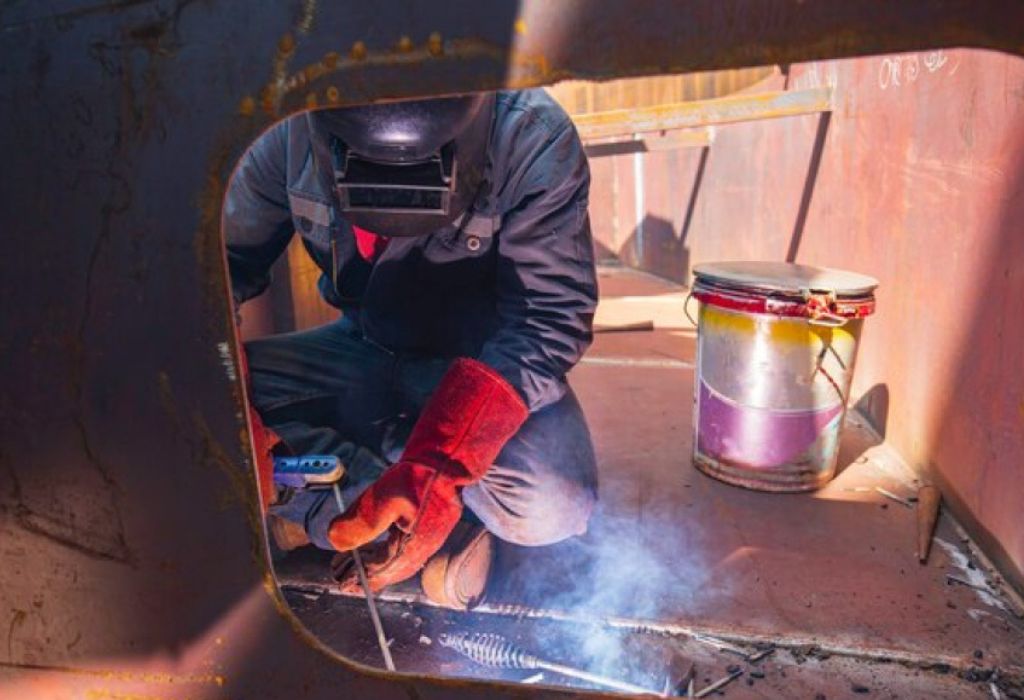A cast iron part cracks on a critical job, and downtime starts to cost money by the minute.
The quick question hits first: can you weld cast iron with a MIG welder without making things worse.
Cast iron behaves differently from mild steel because of its high carbon content and brittle microstructure.
Gray cast iron alone typically contains about 2–4% carbon, which drives hardness and cracking risk during welding (Britannica).
Thermal shock and rapid cooling push the heat-affected zone toward martensite, which can fracture after the part cools.
Authorities commonly advise controlled preheat and slow cooling for repair success on gray iron, often in the 260–315 °C range for fusion welding (Lincoln Electric).
MIG can work for non-critical repairs when heat input and consumables are selected carefully.
MIG brazing with CuSi wire often delivers lower cracking risk because the base metal is not fully melted (TWI Global).
This guide explains when MIG is acceptable, how to prepare the joint, and which parameters reduce failures.
The steps, controls, and troubleshooting sections are designed for practical field use and quality outcomes.
H2: Quick Answer and Why It Is Tricky

MIG can join some cast iron parts, but the success window is narrow.
The main hazards are HAZ brittleness, residual stress, oil contamination, and poor wetting.
Q&A
Can you weld cast iron with a MIG welder?
Yes, for non-critical or cosmetic repairs when heat and filler are controlled.
What is the safer route for many jobs?
MIG brazing with CuSi wire or stick welding with nickel rods for higher ductility.
What usually causes failures after MIG on iron?
Rapid cooling, high dilution, and hard microstructures near the fusion line.
What is the one rule that changes outcomes fast?
Use correct preheat and very slow cooling to minimize thermal shock.
H2: Understanding Cast Iron Metallurgy
Cast iron is an iron-carbon-silicon alloy with graphite in flake or nodular form.
Graphite shape dictates toughness because flakes act as crack starters.
H3: Types and Weldability
Gray iron is common and crack-prone because graphite flakes concentrate stress.
Ductile iron has nodular graphite and offers better toughness but still needs tight control.
Q&A
Which cast iron is hardest to weld?
White iron, because it transforms to a very hard martensitic structure.
Which types are most repairable with care?
Gray and ductile irons with correct preheat, filler, and cooling practice.
Why is dilution a problem in fusion MIG?
Molten base metal mixes with filler and can create brittle iron carbides.
How can the base metal be identified quickly?
Use spark testing, grinding behavior, and manufacturer data when available.
H2: When to Choose MIG vs. Brazing or Stick
The best process depends on service criticality, joint geometry, and access.
MIG fusion joins are possible but carry crack risk that may not suit safety parts.
H3: Decision Matrix
Choose MIG or MIG brazing for cosmetic patches, small fillets, non-pressure housings, and fixtures.
Select nickel SMAW or a professional repair for pressure vessels, steering components, and lifting points.
Q&A
Is MIG appropriate for load-bearing castings?
Usually not, because HAZ brittleness can create hidden cracks.
When does MIG brazing shine?
When low heat input and reduced dilution are priorities.
Why does nickel SMAW remain popular?
Nickel fillers tolerate carbon and stay machinable after cooling.
What is the smartest first step for a critical casting?
Seek a materials engineer or specialist repair shop before attempting welds.
H2: Preparation: Assessment, Cleaning, and Fit-Up
Repairs succeed or fail before the arc starts.
Good prep removes oil, paint, carbon scale, and stress risers.
H3: Degreasing and Joint Prep
Heat the part gently to drive out oil from pores, then scrub and solvent-clean.
Bevel cracks 60–80° to sound metal, and drill stop holes at crack tips.
Q&A
Why is oil such a big problem on iron?
It creates porosity and prevents wetting at the root.
Do stop holes really help?
Yes, they blunt crack tips and arrest propagation while heating.
What about fixturing and clamping?
Use clamps or tack bridges to control movement without forcing the joint.
Should the bevel reach shiny metal everywhere?
Yes, remove all paint, rust, and chilled skin for reliable fusion or wetting.
H2: Consumables and Machine Settings for MIG on Cast Iron
Consumable selection drives success far more than voltage alone.
Three families are commonly used for MIG work on iron.
H3: Filler Options and Shielding
Ni-based MIG wires exist and give ductile deposits but can be costly or hard to source.
309 stainless can bridge and tolerate dilution but may increase hardness at the fusion line.
CuSi-3 copper-silicon wire is used for MIG brazing because it wets iron at lower heat.
Pure argon is typical for CuSi, while argon-rich mixes suit Ni or 309 fillers.
Q&A
What wire diameter helps control heat best?
Small diameters such as 0.8–0.9 mm help maintain low current.
Which transfer mode is preferred?
Short-circuit transfer for tight control on thin sections and edges.
Is straight CO₂ acceptable?
It increases heat and spatter, which is not ideal for fragile irons.
How should inductance and stick-out be set?
Use moderate inductance and consistent 10–12 mm stick-out for stable short arc.
H2: Preheat, Interpass, and Heat Input Control
Preheat reduces thermal gradients that trigger hard structures.
Interpass control keeps the joint in a safe temperature window.
H3: Temperature Windows and Monitoring
For gray iron fusion welds, many procedures use 260–315 °C preheat and maintain interpass within that band.
MIG brazing often works with 80–150 °C because the base metal is not fully melted.
Q&A
Is preheat always required?
Strongly recommended for fusion processes on gray iron.
How should temperature be verified?
Use Tempilstik crayons or IR thermometers on both sides of the joint.
Are short beads better than long ones?
Yes, short stringers limit HAZ width and residual stress.
Is peening useful between passes?
Light hammer peening reduces tensile shrinkage as beads cool.
H2: Step-by-Step Procedure for MIG Fusion

Set the workspace with heat-resistant pads and shielding gas checks.
Confirm clamps, stop holes, and bevel geometry before any tack.
H3: Tacking and Sequencing
Place small tacks in four quadrants to lock alignment.
Stagger welds to spread heat and minimize distortion.
Run short stringers with pauses to equalize temperature across the casting.
Brush and inspect after each pass for signs of cracking or porosity.
Q&A
What travel speed reduces dilution best?
Steady, slightly fast travel that keeps the puddle shallow.
Why back-stepping helps on iron
It distributes contraction stress over several small beads.
How to tell if the part is overheating?
Discoloration spreads far from the joint or the puddle becomes too fluid.
What to do if pores appear mid-pass?
Stop, re-clean, and re-preheat before continuing.
H2: Step-by-Step Procedure for MIG Brazing (CuSi-3)
MIG brazing relies on capillary wetting instead of full fusion.
The objective is a sealed, ductile fillet with minimal base metal melting.
H3: Technique and Control
Use a lower voltage window and aim the arc slightly ahead of the wire.
Keep torch angle low so filler wets the iron edges without digging.
Feather the bead and overlap passes to avoid undercut.
Limit dwell time to prevent local fusion and iron dilution.
Q&A
Why choose CuSi for cast iron repairs?
It lowers heat input and resists cracking due to more ductile deposits.
Can brazed joints be machined?
Yes, but use sharp tooling because copper alloys smear.
How does brazing handle oil-soaked areas?
It still needs thorough de-oiling because oil blocks wetting.
Is joint strength as high as fusion welds?
Strength can be lower, so use it for non-critical service and sealing.
H2: Post-Weld Cooling and Stress Relief
Cooling rate determines whether the HAZ becomes brittle.
Slow cooling protects against delayed cracking and tool-killing hardness.
H3: Insulation and Post-Heat
Wrap the part in welding blankets, dry sand, or vermiculite for several hours.
Large castings benefit from gentle post-heat followed by an extended slow cool.
Inspect the joint after cooling and remove any temporary clamps.
Machine only after hardness is acceptable and the part is fully stabilized.
Q&A
How slow is slow enough?
Several hours of insulated cooling until near ambient temperature.
What indicates poor cooling practice?
Cracks that appear a day later or edges that spark excessively during grinding.
Does stress relief always help?
It can reduce hardness and residual stress when microstructure allows.
When should a repair be abandoned?
If repeated cracks appear despite correct prep, heat, and consumables.
H2: Common Defects and Troubleshooting
Most defects come from contamination, heat control, or dilution.
Systematically remove causes instead of piling on more weld metal.
H3: Typical Problems and Fixes
Porosity means oil, paint, or moisture reached the puddle.
Re-clean, bake the area, and confirm dry gas and hoses.
Lack of fusion occurs when voltage is too low or the bevel is too tight.
Open the groove, raise wire feed slightly, and improve torch angle.
High hardness shows as squealing when machining or chipping at the toe.
Switch to nickel filler, increase preheat, or consider brazing instead.
Q&A
Why do cracks show up the day after welding?
Residual stress and brittle HAZ continue to transform during cool-down.
How can hardness be checked quickly?
Use file tests, portable hardness testers, or trial drilling on sacrificial tabs.
What if a small pinhole leak remains?
Seal with a low-heat brazed pass after re-cleaning the area.
Do wider beads help or hurt?
Wider beads usually hurt because they enlarge the brittle zone.
H2: Safety, Quality Assurance, and When to Walk Away
Cast iron repairs often involve fumes from oils, paint, and degreasers.
Use local exhaust ventilation, proper gloves, and safety glasses for every pass.
H3: QA Records and Tests
Record preheat values, interpass temperatures, wires, and gas types.
Dye-penetrant testing helps reveal surface cracks before returning a part to service.
Pressure-bearing castings merit hydrostatic tests or outsourced NDT.
Documentation protects quality, safety, and repeatability for future work.
Q&A
Are cast iron fumes a concern?
Yes, because oils and coatings can produce hazardous vapors during heating.
Which standard resources guide procedures?
Use AWS repair bulletins, TWI knowledge summaries, and manufacturer manuals.
When is replacement smarter than repair?
When the part is safety critical or cracking persists despite best practice.
What PPE differences exist for brazing vs welding?
Both need eye, skin, and fume protection, and brazing still requires ventilation.
H2: Practical Numbers and Where to Cite Them
Composition ranges, preheat bands, and cooling advice should reference authoritative sources.
Use these trusted starting points when documenting procedures and training.
- Cast iron carbon range and graphite forms: See encyclopedic references for 2–4% carbon and graphite behavior (Britannica).
- Preheat recommendations and repair cautions: Review application notes and procedures for cast iron repair (Lincoln Electric).
- Process selection and brazing benefits on iron: Consult technical overviews of cast iron joining methods (TWI Global).
- General preheat and slow-cool practice: See process guidance for thermal control and distortion management (MillerWelds).
H2: On-Tool Settings and Quick Reference

Keep the process simple and repeatable in the field.
Use a laminated card with key ranges to cut set-up time.
- Wire: 0.8–0.9 mm Ni, 309, or CuSi-3 depending on process.
- Gas: Ar-rich mixes for Ni or 309, pure Ar for CuSi.
- Transfer: Short-circuit with stable arc and minimal spatter.
- Preheat: 260–315 °C for fusion on gray iron when feasible.
- Cooling: Insulated slow cool for several hours to near ambient.
Q&A
What stickout is practical for tight joints?
About 10–12 mm to keep the arc stable without overheating tips.
How often should the joint be brushed?
After every bead to remove oxide and check for flaws.
What happens if CO₂ is used on CuSi?
The arc runs hotter and can cause unwanted fusion.
Do long passes ever make sense?
Rarely on iron because long passes shrink more and crack more.
H2: Example Workflow for a Small Housing Crack
A small crack runs from a bolt hole into a gray iron housing.
The repair needs sealing and basic strength without precise machining.
- Assessment and Prep
Drill stop holes at each end of the crack.
Bevel the crack into a wide V, heat gently to drive out oil, and solvent-clean. - Process Choice
Select MIG brazing with CuSi-3 to reduce dilution.
Preheat locally to about 120 °C for consistent wetting. - Tacking and Passes
Place small tacks, then run short overlapping beads with low voltage.
Brush between beads, peen lightly, and keep the part warm. - Cooling and Finish
Wrap in insulation and allow a very slow cool.
After full cool, leak test and dress the surface as needed.
Q&A
Why was brazing chosen here?
The goal was sealing with low heat and minimal brittleness.
Could fusion MIG have worked?
Possibly, but it would raise cracking risk near the bolt hole.
What if a pinhole appears after testing?
Re-clean and add a tiny brazed cap with quick re-heat.
How to avoid future cracks from the hole?
Chamfer edges and avoid over-torque on the fastener.
Conclusion
The question “can you weld cast iron with a MIG welder” has a careful answer.
Yes, but the margin for error is small and the safest path often uses MIG brazing or nickel stick.
Success depends on joint prep, correct consumables, preheat, and disciplined slow cooling.
Defect control demands short beads, light peening, and rigorous cleaning between passes.
Use MIG for non-critical repairs and choose brazing or nickel SMAW for higher reliability.
Document temperatures, verify with simple tests, and walk away when risk outweighs reward.
For deeper study, review the linked sources and build a simple procedure sheet for your shop.
Better planning today prevents brittle fractures tomorrow and keeps cast iron tools in service longer.

I’m Darrell Julian, the founder, lead writer, and hands-on welding enthusiast behind ArcWeldingPro.com. With more than 15 years of real-world welding experience, I created this platform to share what I’ve learned in the field, in the shop, and in the heat of the arc.


